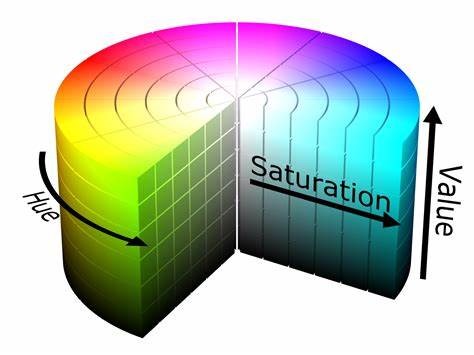The HSV color space, often called HSC (Hue, Saturation, and Value), represents colors in terms of their hue, saturation, and value. It’s a transformation of the RGB color space that aims to better represent human perception of color. Let’s break down each component and discuss its relevance in image processing tasks:
Hue (H):
- Hue represents the pure color of an object, independent of its brightness or intensity. It’s often described as the “color wheel” component, where hues are arranged in a circular manner. The hue value ranges from 0 to 360 degrees, covering all possible colors in the spectrum.
- Relevance in Image Processing: In tasks like object detection, segmentation, and color-based tracking, hue is crucial for identifying specific colors or color ranges in an image. By isolating objects based on their hue, we can distinguish between different colored objects in an image.
Saturation (S):
- Saturation refers to the intensity or purity of a color. A high saturation means the color is vivid and intense, while a low saturation indicates the color is closer to grayscale.
- Relevance in Image Processing: Saturation is important for tasks like image enhancement and adjustment. By adjusting the saturation, we can enhance or reduce the intensity of colors in an image, thereby improving its visual appearance or emphasizing specific features.
Value (V), also known as Brightness or Lightness:
- Value represents the brightness of a color. A high value indicates a lighter color, while a low value indicates a darker color.
- Relevance in Image Processing: Value is useful for tasks such as image segmentation and thresholding. By thresholding based on the value component, we can separate objects from the background or identify regions of interest based on their brightness levels.

The HSV color space is particularly advantageous for certain image processing tasks compared to the RGB color space. For example:
- It’s more intuitive for tasks like color-based segmentation and detection since it separates the representation of color from its intensity.
- It simplifies the process of adjusting color properties like brightness and saturation, as these adjustments can be made independently of each other.
- It provides a more natural way of describing and manipulating colors, aligning better with human perception.